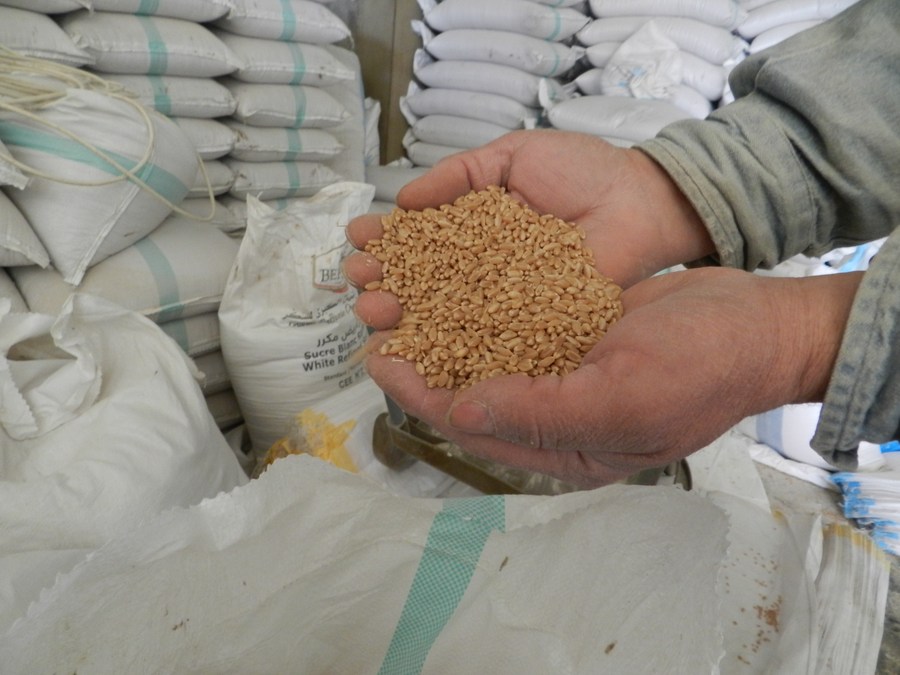Real Culprits for Global Food Crisis

Trapped in a global food crisis, the world should work together to weather storms rather than seeking scapegoats.
Samantha Power, Administrator of the U.S. Agency for International Development, has pointed the finger at China for exacerbating the global food crisis by “hoarding” grain. Power made the accusation during her speech at the Center for Strategic and International Studies, a U.S. think tank, on July 18.
Indeed, the world is facing a food crisis. The World Food Program (WFP) warned in April that 2022 would be a terrible year of hunger. Soaring food prices and supply shortages have pushed 44 million people in 38 countries to the edge of famine. But to blame the crisis on China is nonsense.
Data released by the National Bureau of Statistics shows China has registered a bumper summer harvest this year. The most populous country in the world, and also the largest grain producer, China has managed to feed 20 percent of the world population with less than 9 percent of the world’s arable land and produces one quarter of global grain. This feat is a great contribution to world food security.
Several factors are responsible for the current global food crisis. From the mid and long-term perspective, in the 1990s, developed countries, especially the United States, began to use grain as a means of invasion. Thanks to the vast mechanization of grain production and its resulting low cost, U.S. dealers managed to sell grain to developing countries in large amounts cheaply, thus undermining agriculture in these countries and manipulating their grain markets. For decades, global food prices have been dominated by four companies—Archer Daniels Midland, Bunge and Cargill of the United States and Louis Dreyfus of France, which control 80 percent of grain trade around the world.

Developed countries’ use of grain for industrial purposes is also squeezing global food supply. According to research by China Futures, a Chinese futures trading firm, currently, 36 percent of corn produced in the United States is used to produce ethanol. Forty-one percent of soybean oil produced in the United States and 20 percent of that produced globally are used to make biodiesel. Sixty-four percent of rapeseed oil in the European Union and 20 percent of the world’s are also used for biodiesel. Huge industrial demand for grain is therefore responsible for soaring food prices and food shortages.
In recent years the world has been shaken by the COVID-19 pandemic, extreme weather, and geopolitical conflicts, which have disrupted food production and supply chains. Rocketing grain prices push low-income countries into a severe food crisis. Hit by La Niña, the periodic cooling of ocean surface temperatures across the tropical Pacific that can cause extreme weather conditions, in 2020 and 2021, Brazil saw severe droughts and a slump of soybean production, while Southeast Asia was ravaged by rainstorms, which resulted in declining rice and palm output. The Russia-Ukraine conflict is blockading grain exports from these two breadbaskets. It has sent global grain prices to stratospheric levels. Wheat futures are now priced 40 percent higher than before the conflict.
Moreover, food waste in some developed countries must be blamed. In the United States, discarded food amounts to 150,000 tons every day, 12 percent being grain and 39 percent vegetables and fruits. Thirty million acres of grain, making up 7 percent of the country’s farmland, ends up in dustbins each year. All in all, this makes the United States the largest food waster in the world.
While guaranteeing its own food security, China is also engaged in the fight against global food insecurity, supporting the WFP’s launch of a global humanitarian response hub in China and helping set up transnational grain companies in other countries in a bid to boost local grain production. Chinese agricultural experts have been helping farmers in low-income countries in Asia, Africa, Latin America and the South Pacific with crop growing techniques. Since the beginning of this year, China has provided more than 30,000 tons of food in emergency humanitarian aid to countries in need.
Trapped in a global food crisis, the world should work together to weather storms rather than seeking scapegoats. The U.S., of course, can play a major role in advancing the humanitarian cause; however, the least constructive course of action in this situation is to level accusations at the expense of forming consensus.
 Facebook
Facebook
 Twitter
Twitter
 Linkedin
Linkedin
 Google +
Google +










